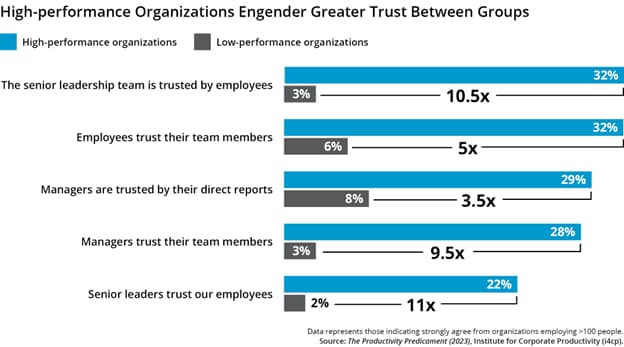With approximately three-quarters of organizations today requiring their workforce to be onsite for at least a few days a week, we’ve officially exited the era of flexibility and entered an era of forced hybrid. Most companies don’t like the word “forced,” so they’ve been using softer terms like distributed, agile or blended work.
Whatever it’s being called, the simple fact is these organizations don’t trust the workforce to be fully productive working remotely and believe there are benefits to requiring employees to work in closer proximity to each other, at least some of the time. Three days a week is the most popular mandate, and Tuesday, Wednesday and Thursday are usually the chosen days (most have given up on Fridays).
CEOs and corporate communication execs have been providing explanations for the requirement, often going into great detail since several new policies reversed earlier promises (voiced typically in the weeks after the pandemic) that the company didn’t care about individual work location. Despite the detail, the reasons given for requiring time on-premise are actually relatively finite.
“Improving productivity” is one that is frequently uttered as a reason for returning to the worksite.

Unfortunately, that’s not playing out as planned. Privately (and quietly), companies are confessing that forced hybrid is actually hurting productivity. And data from our new study—The Productivity Predicament—supports this. It turns out that what most companies saw immediately after the start of the pandemic is true: Many people are quite productive working remotely, and assuming everyone’s work styles and habits are the same isn’t very logical.
So, if work location has little bearing, how does a company improve productivity?
See also: Employee trust and its impact on high-performing organizations
Focus on the culture
i4cp research shows that companies with a healthy culture are far more productive than organizations with toxic cultures. In fact, the health of culture explained close to 20% of the variation in employee productivity since the pandemic started. Cultural health is also strongly correlated to four critical components of business performance (revenue growth, market share, profitability and customer satisfaction).
High-performance organizations—those that excel in those components of business performance—are 6x more likely to have a healthy culture than low-performance organizations.
Research shows that healthy cultures also enjoy:
- Better retention amongst the workforce
- A greater ability to attract top talent
- Higher engagement
- Improved employer net promoter scores
They typically also enjoy a higher dose of a critical ingredient to higher productivity: trust.
Restore bi-directional trust for employee productivity

With return-to-office mandates and the predictable employee pushback, it’s clear that trust between senior management and the workforce has waned significantly in many organizations. Stories of petitions and walkouts by employees dominate the business press these days, but the quieter grumbling is what’s concerning many leaders. Equally, a large percentage of companies are quietly monitoring employee activity and are suspicious of how much work is really getting accomplished.
Bi-directional trust is critical for many reasons but, from a pure business perspective, organizations should accept a simple fact: Trust significantly impacts productivity.
To help understand this, i4cp created an Organizational Trust Index and then mapped it to business performance over the last 5 years. The index tracked responses to five key variables:
- Senior leaders trust our employees.
- Managers trust their team members.
- Managers are trusted by their direct reports.
- Employees trust their team members.
- The senior leadership team is trusted by employees.

The difference in trust between high- and low-performance organizations is rather startling, with high performers strongly agreeing with these five trust statements by a factor of 3.5-11x over low performers. In turn, this is affecting workforce productivity: these five trust statements collectively account for 18% of the variance in an organization’s productivity since the start of the pandemic.
Companies with toxic cultures are 16x more likely to say “lack of trust in senior leaders” is an issue that needs to be addressed. These same organizations are also 10x more likely to indicate an “unsafe environment for expressing opinions or concerns” as a top issue in their organizations. Lack of trust is really what’s at the core of any toxic relationship.
Our study covered other areas that impact productivity, not the least of which was the adoption of generative AI, along with a focus on goal achievement. But without first establishing a trusting and healthy culture, at the end of the day, none of those other things really matter.
Not even where someone happens to sit during the day.
Learn more from i4cp experts at the HR Technology Conference in October at Mandalay Bay in Las Vegas. Kevin Oakes and Katheryn Brekken will present a pre-conference workshop titled “Building a Healthy, Productive and AI-Fueled Culture” and a keynote on “AI and HR: Implications and Opportunities.” Click here to register.
The post Return-to-office mandates don’t improve productivity. Here’s what does appeared first on HR Executive.